Are you a Quiet Speculation member?
If not, now is a perfect time to join up! Our powerful tools, breaking-news analysis, and exclusive Discord channel will make sure you stay up to date and ahead of the curve.
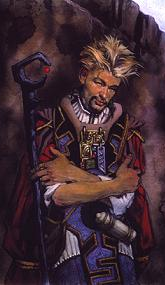 The Great Designer Search is fascinating reading. I read the first one over the course of a couple days while in the gym after coming across it last year (I was on a break from Magic when it originally occurred), and staring at a treasure trove of design nuggets on my iPhone's screen I forgot entirely that I was on an exerbike. When the second one rolled around, I was quite interested in seeing how far a certain idea I had been kicking around might do- even made a wiki page for it- but was given a better offer and abandoned the idea. Life's funny that way.
The Great Designer Search is fascinating reading. I read the first one over the course of a couple days while in the gym after coming across it last year (I was on a break from Magic when it originally occurred), and staring at a treasure trove of design nuggets on my iPhone's screen I forgot entirely that I was on an exerbike. When the second one rolled around, I was quite interested in seeing how far a certain idea I had been kicking around might do- even made a wiki page for it- but was given a better offer and abandoned the idea. Life's funny that way.
I stopped reading the GDS2 articles on the mothership, instead looking forward to when it had run its course and I could again go straight through it rather than wait week-to-week. This best-laid-plan had it's apple-cart upended by a timely message on Twitter from Eric McCormick, thewachman, that I should offer my services to the contestants.
It made a small amount of sense. Design Challenge #5 tasked the four remaining designers with creating an intro pack from top to bottom. Since last June we'd provided in-depth analysis and review of over sixty different preconstructed decks over at Ertai's Lament. And besides, who else could say that they had every intro pack deck in the current Standard environment boxed, sleeved, and ready to go? We published an open invitation to the designers on Lament along with suggested reading from Magic Beyond the Box, and waited to see what would happen.
A week later we had four prototype intro packs complete and ready for testing, and we spent nearly an entire weekend running them. We'll begin with the first deigner who sent us his deck.
Ethan Fleischer: Tooth and Claw
The World: Epolith "In a world where centuries pass in hours, only the fittest will survive!"
The Mechanic: Evolve is a creature-based keyword that triggers a certain effect whenever another creature enters the battlefield that has a higher power than an Evolve creature. This usually involves giving the creature a +1/+1 counter, but has the same rich vein of design space to mine as the Allies of Zendikar and Worldwake. An example:
On my second turn, I tap out and play a Cave Bear. Next turn, after playing another Forest, I tap out again and play a Leaping Ornitholestes. Because the power of the Ornitholestes is greater than that of the Bear, the Bear's evolve triggers and gives it a +1/+1 counter. I now swing in on my dismayed opponent with a 3/3 Cave Bear.
It bears mention that I did the mockups for these- please don't blame Ethan for them.
The Deck: Ethan's design is a Red/Green deck that heavily showcases the evolve mechanic, much like Zendikar's The Adventurers did for Allies. Upon initial review, we noted that it had a thematically-fitting dinosaur-sized footprint on the back end of the mana curve, which plenty of expensive cards. This meant two things. First, that ramp would need to be a critical element of the deck, for what good are bombs that you can't play? Second, the deck would yield a higher amount of difficult opening hand decisions. No amount of ramp in the world is going to make you happy when you draw three cards with a converted mana cost of five or more in your opening grip. That said, every deck needs a weakness, and Tooth and Claw would hardly be the first intro deck to have that concern. Here are the design elements of the deck.
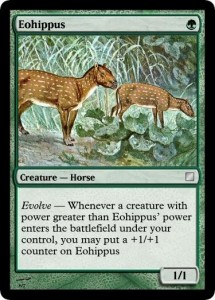 Evolve Creatures: Exactly half of the deck's 18 beaters had the evolve keyword, which seemed a very solid proportion. It allowed the deck to strongly represent the mechanic without being heavily dependant upon it. In many ways, evolve is a scaled back version of Allies. With Allies, you had a guaranteed trigger with almost every cast (80% of the creatures in The Adventurers had this subtype), but there was a tradeoff in that the cards were highly parasitic. In order to get the most from your Allies, you had to, well, play more Allies! You didn't often see one or two splashed here or there as they weren't all that impressive on their own (though [card Kazandu Blademaster]not without exception[/card]), and Allies decks generally included [card Bloodbraid Elf]only a handful of non-Allies[/card]. Now we have evolve, which is weaker in the sense that it's trigger is conditional (it only goes off when another creature enters the battlefield under your control with a higher power), but by consequence this makes it far more flexible as well.
Evolve Creatures: Exactly half of the deck's 18 beaters had the evolve keyword, which seemed a very solid proportion. It allowed the deck to strongly represent the mechanic without being heavily dependant upon it. In many ways, evolve is a scaled back version of Allies. With Allies, you had a guaranteed trigger with almost every cast (80% of the creatures in The Adventurers had this subtype), but there was a tradeoff in that the cards were highly parasitic. In order to get the most from your Allies, you had to, well, play more Allies! You didn't often see one or two splashed here or there as they weren't all that impressive on their own (though [card Kazandu Blademaster]not without exception[/card]), and Allies decks generally included [card Bloodbraid Elf]only a handful of non-Allies[/card]. Now we have evolve, which is weaker in the sense that it's trigger is conditional (it only goes off when another creature enters the battlefield under your control with a higher power), but by consequence this makes it far more flexible as well.
For Tooth and Claw, the evolve creatures naturally settled around the bottom of the power curve. You had a pair of Eohippus and a Hulking Sailback (the Red version which was unable to block). Next came a trio of Cave Bears, strictly better than their [card Grizzly Bears]much-maligned foundation[/card], as well as a pair of curveballs. The Potbreaker Bull not only got the +1/+1 counter bonus for evolve, but he also smashed artifacts with a converted mana cost less than or equal to his power. Meanwhile, the Fecund Maiasaur- the Tooth and Claw equivalent of the Turntimber Ranger- spawned 2/2 dino-babies every time it evolved. Playtesting showed that she was perhaps a touch too fecund, since her initial design only had her spawning tokens and didn't give her +1/+1 counters, so she was soon brought in line with the others and saw her power grow with each trigger. This made her stronger, but also had the happy consequence of balancing out her fecundity to fairer levels. Finally, there was the Prosaurapod, a 4/4 evolver which had trample to boot.
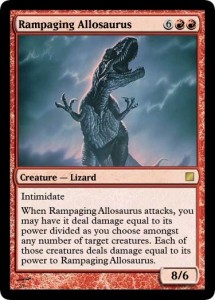 To help move things along, the rest of the creatures in the deck were ones with strong power, even at the cost of toughness. The Leaping Ornitholestes was a 3/1 for three mana, which had an activated ability allowing it to be sacrificed to deal three damage to a flying creature (very flavourful, for the name 'Ornitholestes' means "bird-robber"). You also had a Velociraptor Pack, which as a 4-power creature with flash gave a dash of trickery to the deck; a Ball Lightning variant in Starving Deinonychus which cleverly stuck around another turn if it happened to deal damage to a creature each turn; and the "foil premium rare" of Rampaging Allosaurus, a huge beatstick with intimidate and a "fight" ability comparable to Cyclops Gladiator. In support of these, we were given:
To help move things along, the rest of the creatures in the deck were ones with strong power, even at the cost of toughness. The Leaping Ornitholestes was a 3/1 for three mana, which had an activated ability allowing it to be sacrificed to deal three damage to a flying creature (very flavourful, for the name 'Ornitholestes' means "bird-robber"). You also had a Velociraptor Pack, which as a 4-power creature with flash gave a dash of trickery to the deck; a Ball Lightning variant in Starving Deinonychus which cleverly stuck around another turn if it happened to deal damage to a creature each turn; and the "foil premium rare" of Rampaging Allosaurus, a huge beatstick with intimidate and a "fight" ability comparable to Cyclops Gladiator. In support of these, we were given:
Mana Ramp: A generous serving of six cards helped get us where we were wanting to go with this deck, which is up the evolutionary power chain as fast as possible bringing as many evolving weenies up as we went. A trio of Elven Beastcallers wouldn't have felt out of place on Naya: a 1/1 mana dork that also tutored your library for a creature with power 3 or greater upon entering the battlefield had great synergy for the 'gargantuan' strategy. Migration Route filled out the other three, a sorcery which fetched a basic land to your hand and another to the top of your library. These had a great feel, though the card to hand was soon changed to entering the battlefield tapped instead.
Burn: A healthy dollop of burn was included with Tooth and Claw, adding to the sense of primordial prehistory. You had a pair of [card Lightning Bolt]Lightning Bolts[/card], two Comet Crashes (instants that deal 7 damage to a target creature), and a Lava Torrent (an X-spell which dealt X damage divided however you saw fit between a single target creature and its controller).
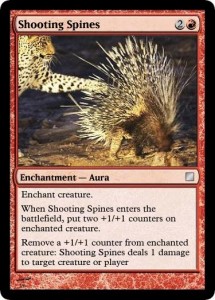 Miscellany: Everything else fit here. Selection Pressure was an instant that added two +1/+1 counters to one creature, while Accelerated Evolution was an enchantment version that gave every creature you played the same thing. Mist (replacing an early Act of Treason in the card list) was essentially Vines of Vastwood without the kicker, while Deliquesce melted down an artifact or enchantment and gave you an Ooze creature with power and toughness equal to the converted mana cost of your target. Finally there were a pair of creature auras, Symbiotic Adaption and Shooting Spines. Each bestowed a pair of +1/+1 counters to the target creature, but each allowed different shenanigans with the counters. For Symbiotic Adaption, you had to wait for the critter to die, but when it did it burst open and a number of 1/1 Elf token creatures spilled out equal to the number of +1/+1 counters that were on the enchanted critter. For Shooting Spines, you could trade in counters for 1 point of damage to a creature or player per counter.
Miscellany: Everything else fit here. Selection Pressure was an instant that added two +1/+1 counters to one creature, while Accelerated Evolution was an enchantment version that gave every creature you played the same thing. Mist (replacing an early Act of Treason in the card list) was essentially Vines of Vastwood without the kicker, while Deliquesce melted down an artifact or enchantment and gave you an Ooze creature with power and toughness equal to the converted mana cost of your target. Finally there were a pair of creature auras, Symbiotic Adaption and Shooting Spines. Each bestowed a pair of +1/+1 counters to the target creature, but each allowed different shenanigans with the counters. For Symbiotic Adaption, you had to wait for the critter to die, but when it did it burst open and a number of 1/1 Elf token creatures spilled out equal to the number of +1/+1 counters that were on the enchanted critter. For Shooting Spines, you could trade in counters for 1 point of damage to a creature or player per counter.
In a nutshell, then you had a gaggle of low-power creatures with evolve and a slew of fatter ones to help their bretheren rapidly climb the evolutionary ladder, helped along by a solid suite of burn and ramp rounded out by a collection of combat tricks, pump cards and auras. Next, it was time to test! Ethan had sepcifically asked that we examine the matchup with Kor Armory with extra regard, for that deck simulated the equipment-heavy element of his set.
The Playtest: Our initial plan was to run the deck through the entire gamut of Standard-legal precons in a series of three-game matches, from Zendikar through Scars of Mirrodin. Very quickly the remaining three designers signed on for playtesting, and we were forced to scale back the scope of our operations. Tooth and Claw made it all the way through Zendikar, which was plenty of time to see the deck work, but we added on a few decks the following day after a few revisions were made.
From the outset, we also implemented an unofficial rating system, where we'd each rate our deck on a five-point scale after each game. A score of 3 meant that you felt your deck was approximate in power to the other, win or lose. A '2' or a '4' meant that your deck was either somewhat weaker or stronger, while '1' and '5' meant that the test was lopsided.
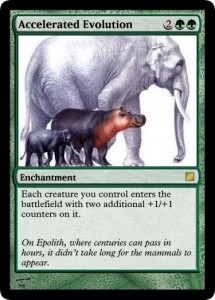 We began with six tests against Kor Armory (adding an extra three due to Ethan's preference for the matchup), and if these matches are anything to go by, I'd say the cavemen and their flint-tipped spears are in for a rough go of things. The Potbreaker Bull smashed its fair share of equipment, while the [card Kor Skyfisher]Kor flyers[/card] were easy pickings for the Leaping Ornitholestes. Nor could the Kor consistently compete on size or numbers. An optimal sequence for Tooth and Claw often ran something like this: Turn 1 Eohippus gets evolved by a turn 2 Potbreaker Bull and swings for 2. Next turn land a Hulking Sailback (after swinging for 4), which gets evolved by a turn 4 Fecund Maiasaur (swing for 6). Follow that up with a turn 5 Bellowing Tarbosaurus (an early high-power critter cut in the last iteration of the deck) which evolves the whole table and swing for the win. Of course, the Kor didn't go down quite so easily, but the aggression is clearly evident. Tooth and Claw went 4-2 against the Kor, and the decks felt relatively balanced.
We began with six tests against Kor Armory (adding an extra three due to Ethan's preference for the matchup), and if these matches are anything to go by, I'd say the cavemen and their flint-tipped spears are in for a rough go of things. The Potbreaker Bull smashed its fair share of equipment, while the [card Kor Skyfisher]Kor flyers[/card] were easy pickings for the Leaping Ornitholestes. Nor could the Kor consistently compete on size or numbers. An optimal sequence for Tooth and Claw often ran something like this: Turn 1 Eohippus gets evolved by a turn 2 Potbreaker Bull and swings for 2. Next turn land a Hulking Sailback (after swinging for 4), which gets evolved by a turn 4 Fecund Maiasaur (swing for 6). Follow that up with a turn 5 Bellowing Tarbosaurus (an early high-power critter cut in the last iteration of the deck) which evolves the whole table and swing for the win. Of course, the Kor didn't go down quite so easily, but the aggression is clearly evident. Tooth and Claw went 4-2 against the Kor, and the decks felt relatively balanced.
From there, we continued on through the rest of Zendikar. Tooth and Claw had similar success against Rise of the Vampires, the set's mono-Black aggro deck, going 2-1. Because so many evolve creatures were cheaply-costed, they had early parity with the Vampires. It didn't take long, though, for even the smallest amongst these to become a serious problem for the Vampires player, as even a single 3/3 can impose some difficult attacking decisions. With longer games clearly favouring the evolving Tooth and Claw, the Vamps pilot was under significant pressure. Still, Tooth and Claw's power curve was its own undoing- the game it lost it was stuck on five mana, with a Megalosaurus (a 7/4 beatstick) and two Comet Crashes (removal) in hand, each costing six.
The "mirror match" was next, pitting the dinosaurs against the Allies. Tooth and Claw raced, but as it happened The Adventurers was able to race just a little bit faster, since as discussed above every new Ally played triggered the rest while evolve was more limited and conditional. Still, with both mechanics somewhat draw dependant, Tooth and Claw hit the "evolutionary curve" perfectly in one game and crushed its adversary.
That left only Pumped Up and Unstable Terrain. Pumped Up is a Blue/Red midrange concoction that highlights multikicker, while the Green/Blue Terrain fields huge landfall beaters and prefers some time to develop the board. Tooth and Claw chewed them up, though Pumped Up managed to save some face by winning one of the matches. Unstable Terrain was simply unable to muster up sufficient defense to buy it the time it needed to deploy its bombs.
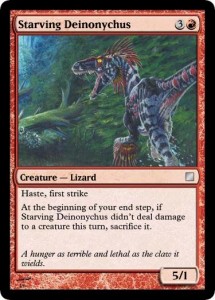 At the end of the first round of testing, Tooth and Claw had gone 12-6 against Zendikar's intro decks, which was cause for concern. You wanted to build a good deck, but not one that would romp all over everything it faced in its weight class. We were somewhat reassured when we looked at the deck ratings that we'd assigned. For most of the decks, a score of '3' had been assigned. Again, that's what we wanted to see- decks that fell within the spectrum of power of one another. Rise of the Vampires and Unstable Terrain, however, averaged 2's.
At the end of the first round of testing, Tooth and Claw had gone 12-6 against Zendikar's intro decks, which was cause for concern. You wanted to build a good deck, but not one that would romp all over everything it faced in its weight class. We were somewhat reassured when we looked at the deck ratings that we'd assigned. For most of the decks, a score of '3' had been assigned. Again, that's what we wanted to see- decks that fell within the spectrum of power of one another. Rise of the Vampires and Unstable Terrain, however, averaged 2's.
The Second Day
By now two of the other designers had shipped us their decks (the third was a day away), and we had to scale back the scope of our gauntlet. Nevertheless, we were quite satisfied that with 18 games of testing, we'd gotten a very solid feel for the deck, and were able to speak to it. After reading our initial report, Ethan sent back some revisions and we incorporated them into our playtest deck, then got back to work. We grabbed Phyrexian Poison and Myr of Mirrodin from Scars of Mirrodin, and the Rise of the Eldrazi deck (and 2009-10 Preconstructed Deck Championship Winner) Eldrazi Arisen.
The first game against the Myr was very encouraging. Tooth and Claw got off to a strong start and had the Myr down to 4 life, but they battled back. With the dinosaurs playing off the top of their library they just couldn't close the deal and lost the game. Swingbacks like this are a positive sign of balance. Dropping the second due to mana issues (which, again, are potentially lethal for decks bloated with expensvie cards), the deck hit the "evolutionary curve" again in the final game and smashed for the win. That curve was all-important, reminiscent of the "zip strips" in the old game RC Pro-Am (or, really, most any racing game): hit it, and the deck was capable of explosive results heading into the midgame. Without it, it could be hit or miss.
Tooth and Claw had little problem with the Phyrexians next, with the evolve mechanic uniquely suited to shrug off infect. Quickly we discovered that even if they picked up a few -1/-1 counters along the way, all it seemed to really do was lower their power and make it easier for them to evolve back to fighting strength. Ethan's deck went 2-1 against Phyrexian Poison, and overall it felt like a fun and fairly even matchup (the third game was won with 9 poison counters). Finally, there was Eldrazi Arisen. The deck at first seemed to be easy pickings for Tooth and Claw, for it too likes some time to develop, but it had some early beaters, burn, and a few lucky breaks. Swinging in with Ulamog's Crusher, my opponent chump-blocked with a body that had four +1/+1 counters on it and been enchanted with Symbiotic Adaption (that's the one that puts a 1/1 Elf token into play for each counter on it when the enchanted creature dies). Of course, overlooked at the time was the Accelerated Evolution in play (all creatures enter the battlefield with two +1/+1 counters on them), so my opponent was able to swing back with four 3/3 Elves and steal a win. Superb!
Ethan's own testing, he mentioned, had given him a few more losses than wins, so the combined record seemed to support that Tooth and Claw was a reasonably-balanced construction. After the conclusion of the first round of testing (the initial 18 games), I sent Ethan a report and analysis of what we'd found, mentioning each matchup, concerns or interactions incolving particular cards, and so forth. We'll end here with a reprint of the conclusion that was sent.
Overall I think this deck is a home run, though there are some areas for concern (don't worry, I say that about the Wizards releases all the time). It's stuffed with flavour, and the Evolve mechanic is a blast, and plays with action order in your main phases much like Allies. Often you'll trade the surprise factor of summoning a new creature post-combat, for the boost it can give the ones you're attacking with. The deck's biggest weakness is its end-heavy curve. Despite the sources of ramp and fixing in the game, that's still a lot to work around. If they didn't know how to before, players of T&C would soon learn to lose their fear of mulliganing- there's just too many hands which will be disadvantageous to keep.
The 12-6 record is a bit of a concern as well, but I'll want to see how it does against a couple ROE and SOM decks before drawing too many conclusions. The Adventurers was something of a legend around here for feeling consistently stronger than the others, so that may not be indicative of overpowering (though a couple cards could be, as noted below).
As mentioned above, the deck is "feast or famine," though it is certainly capable of recovering after a slow start. The presence of burn really helps even that out, as it can level the playing field a bit if T&C is lagging behind. It also makes for a great option for closing out the match, and might be a shade strong there. If intro decks include direct damage x-spells, they're usually singletons as they don't want too many games decided this way.
We've really enjoyed running Tooth and Claw, and will continue to put it through some more stress testing this weekend. If we see anything new we'll definitely let you know. It's a good sign of your deck that I'm not going to break this one down after testing, but leave it in my collection so it's available for play. Well done.
In our next piece, we'll be taking a look at Scott Van Essen's "Jailbreak" and Devon Rule's "Utopian Gold" decks, before moving on to Shawn Main's "Blight" and the series conclusion.


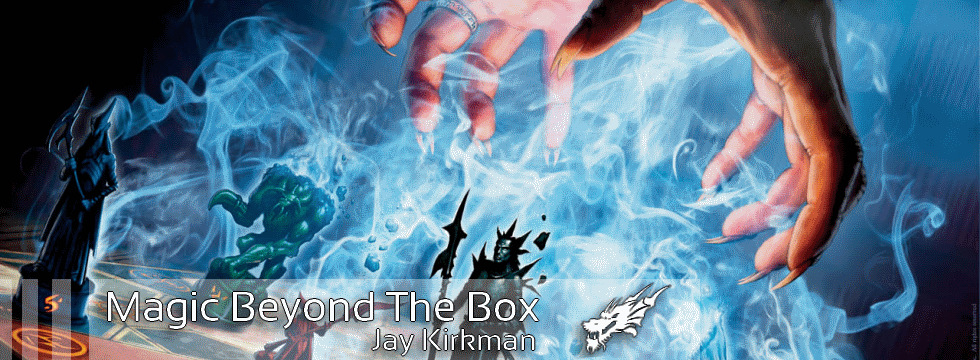
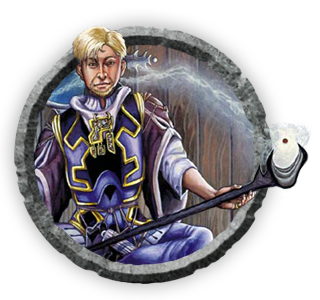
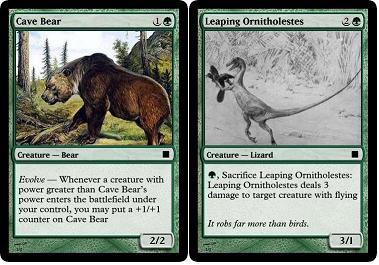
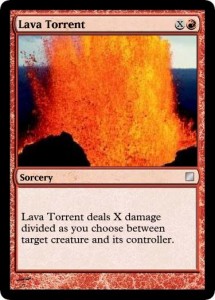



Ethan's deck looks very fun!
It had that going for it, absolutely. It 'worked' the way I'd expect an intro deck would, and the mechanic was simple and fun. Definitely a strong entry!
Awesome article and testing! Also, I love the mock-ups!
Thanks! MSE is a very addictive little thing…
I can't wait to see the rest of the "amateur" (as in not WotC employee) opinions of the GDS2 decks! Honestly, I hope you get them in before the "expert" (WotC) judging. Will be an interesting comparison! Thank you very much!
Thanks! You're in luck- our publishing schedule means that the entire series should be up this week, starting tomorrow.
There is a complete sub-marketplace in the subject of the mobile telephone sector place connected to the jailbreak or unlocking of the cellular phones so that they can be applied on any mobile network, and recent Supreme Court decisions in the USA handed down have confirmed that the jailbreak industry is legal and authentic. That is, end-consumer customers are really within their legal rights to do what they want to their cellular telephone handset to permit the cell phone to work on other network carriers which is commonly acknowledged as jailbreak or unlocking the network block.
Learn how to Jailbreak your iPhone